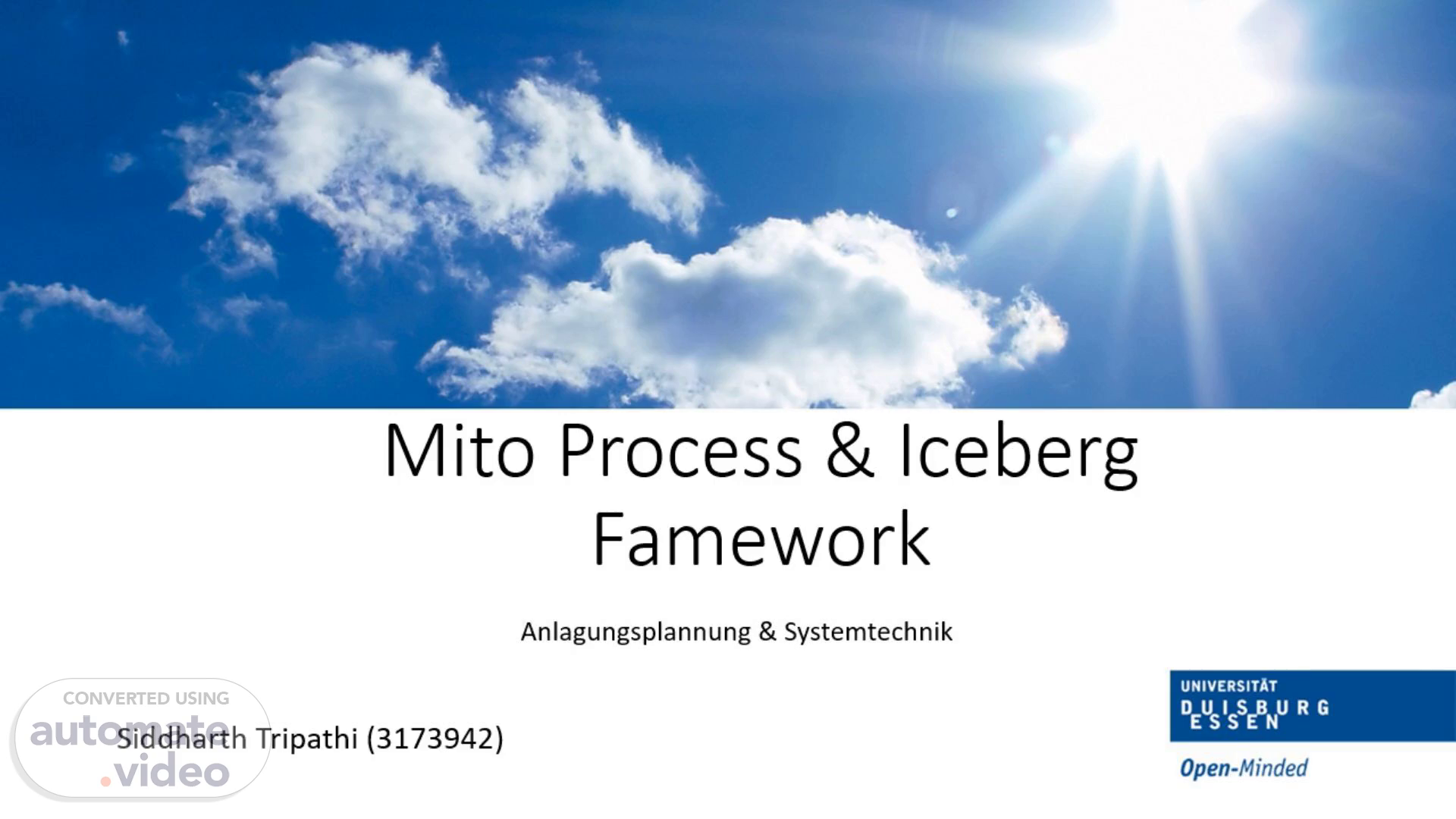
Page 1 (0s)
[Audio] Mito Process & Iceberg Famework Anlagungsplannung & Systemtechnik Siddharth Tripathi (3173942) Introduction.
Page 2 (14s)
[Audio] MITO Process Model MITO stands for Material, Information, Transformation, and Output. The model provides a framework for understanding the flow of materials, information, andenergy through a manufacturing system. This MITO framework provides a holistic view of a process, emphasizing the interconnectedness of material, information, and transformation in generating specific outputs. It's a useful way to analyze and understand complex systems, whether in the context of manufacturing, information processing, or any other domain..
Page 3 (52s)
[Audio] System Thinking System Thinking, a holistic approach to understanding complex systems, is integral to effective organizational management. It recognizes the interconnected nature of various components within an organization and encourages a shift from linear thinking to a more dynamic perspective. Design thinking is a human-centred approach to design anchored in understanding customers’ needs, rapid prototyping, and generating creative ideas that will transform the way you develop products, services, processes, and organizations. By using design thinking, you make decisions based on what customers really want instead of relying only on historical data or making risky bets based on instinct instead of evidence. System thinking involves understanding and addressing problems within the context of interconnected systems, considering relationships and feedback loops. Design thinking is a human-centered approach to problem-solving that emphasizes empathy, ideation, and prototyping to create innovative and user-centric solutions. Combining these approaches provides a holistic framework for tackling complex challenges with a focus on both system dynamics and user experience..
Page 4 (2m 9s)
[Audio] The Iceberg Framework The ICEBERG Framework offers a multidimensional perspective on organizational dynamics, addressing both visible and hidden aspects that influence effectiveness. Comprising six components Information, Culture, Environment, Behavior, Relationships, and Goals the ICEBERG Framework is a valuable tool for uncovering underlying issues and facilitating organizational change. The Iceberg Model is a metaphorical visualisation that discusses the concepts of visible and concealed elements inside a system or organisation. The statement implies that, compared to an iceberg where only a fraction is visible above the ocean surface, a system comprises observable components (the visible aspects) and deeper, invisible components (the hidden aspects). This approach highlights the significance of understanding and addressing both the surface-level and underlying factors to gain a holistic understanding or view of complex situations..
Page 5 (3m 10s)
[Audio] References https://prof-binner-akademie.de/wpcontent/uploads/2023/01/Web-596English.pdf https://bootcamp.uxdesign.cc/how-does-systems-thinking-help-design-thinking-4553a7133e38 Organisation 4.0 MITO-Konfigurationsmanagement by Hartmut F. Binner https://www.researchgate.net/figure/Systems-thinking-process iceberg-model_fig1_327262141 https://mutomorro.com/iceberg-model/ Refrences.